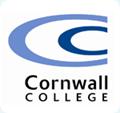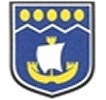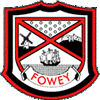Access keys
Search Skip navigation
Cornwall College
Year 2:
Embedding Molenet Across Cornwall (EMAC) 2008/2009



This project draws on the experience and the infrastructure provided by the previous Molenet project (Molenet Across Cornwall) and now looks to embed the use of mobile learning into teaching and learning. Whilst focusing largely on video and vodcast technologies the project will also look at the use of audio/podcasting, interactive mobile devices in the classroom and fieldwork equipment.
Project Aim
To expand upon the valuable work undertaken in molenet 1 by making use of the infrastructure to deliver and record teaching and learning and to really embed the use of mobile learning and technologies into teaching and learning practice.
Project Objectives
- To provide a number of teachers and learners with mobile devices for the purpose of teaching and learning;
- To embed the use of mobile learning into lesson plans and schemes of work(SOW);
- To use the current wireless infrastructure to record and deliver mobile learning;
- To make use of new technologies, equipment and innovative delivery methods in order to assess the impact of such practice on performance and achievement as well as motivation and engagement;
- To share good practice locally and to a broader educational audience.
Cornwall College will be focusing largely on the use of video to record and deliver teaching and learning. Using a variety of handheld video devices our objective is for learners and teachers to record a wide range of activities and to be able to upload them to a central streaming server via the existing wifi and LAN infrastructure. Once there, the video resources will be able to be shared locally to other students and teachers within the college and to a wider educational audience across the Internet (including the molenet community). Mobile devices from the previous molenet project will be used by some students to view the videos. This project will primarily focus within the areas of teacher training, WBL (including use for ePortfolio work), and also a small group of special needs learners who will using the mobile devices to record their work in the community as part of their "Citizenship" module. However, the scope of usage is far broader and we envisage that the reach of the project will far exceed the primary focus.
The Roseland are also focusing around the delivery of video clips but in a slightly different nature in that teachers will record parts of their lessons as podcasts or vodcasts and learners will access these resources using multimedia players.
Fowey Community College are also opting for a video/audio media approach for part of their project, particularly in the areas of music and drama. There are also looking to integrate the use of GPS and weather recording technology in Geography and also the use of interactive handheld technologies in the classrooms for ICT learners. Fowey's project reach will also reach beyond the primary focus learners and will have an affect on the whole school in some cases.
Year 1: Mobile learning network across Cornwall (MolenetAC) 2007/2008





Molenet Across Cornwall is a consortium project of five partners – one FE college as lead and four secondary schools. Each partner had two main aspects to their projects:
- installing wireless infrastructure
- using mobile devices.
There was also a minor strand of research looking at the use of SMS technology.
A range of devices was used across the partnership with a variety of learners, who were all aged 14–19.
Clear findings suggested that the use of mobile learning can improve motivation, engagement and independent learning. It was not possible to say clearly whether there was an improvement in retention and achievement generally, although if improvement in motivation and engagement correlates to retention and achievement it can be speculated that positive results in the latter will follow. There were, however, specific instances where individuals clearly improved their performance.
Generally the project had a positive effect and response from both students and staff.
College and Project Background
The Mobile Learning Network Across Cornwall (MolenetAC) project involved five partners. Cornwall College, the lead partner, is one of the largest FE colleges in the UK. It is spread across Cornwall and has eight sites (Saltash, Duchy Stoke, St Austell, Newquay, Camborne, Falmouth, Duchy Rosewarne). The partners consisted of four secondary schools: Helston Community College, Roseland Community College, Liskeard School and Community College and Fowey Community College.
Each of the partner’s sites is fairly rural to varying degrees. Most of Cornwall does have broadband provision but it is not high speed still in many places. Each partner apportioned some of their project funding to installing wireless infrastructure and some to the purchase and use of mobile devices with students. Much of the Cornwall College part of the project focused on installation of Wireless infrastructure. Being a college with six campuses spread over the whole county and being one of the largest Colleges in the country, and certainly the largest rural college, this was a relatively large task.
Cornwall College
Following a consultation exercise involving the IT department, teaching staff and ILT champions, Cornwall College selected three different mobile devices to trial during the project: the Stone ultra-mobile PC (UMPC), the ASUS eee PC, and the Nintendo DS (with Brain Training). The Nintendo DSs were used with 20 Skills 4 Life learners in St Austell and Camborne. The 40 Stone UMPCs were used with a group of students that come to college from schools one day a week to study construction and also with a group of hair and bbeauty students at a local school (who also visited Cornwall College). The 20 ASUS eee PCs were chosen specifically for their durability; they have a solid-state memory which makes them suitable for use on a WiFi-enabled bus carrying students coming to Cornwall College from schools in the Camelford area (approximately one-hour bus ride). The IT services team liaised with the bus company to install the Wi-Fi equipment.
Liskeard School and Community College
Liskeard School and Community College trialled the use of the HTC TyTN II, a mobile phone/ device that runs Windows Mobile as an operating system. The students were from Year 10 GCSE construction/electronics groups working with one tutor who was leading the project at the institution.
Roseland Community College
The Roseland Community College trialled the use of three different devices: the Stone UMPC, used with a Year 10 photography group, the ASUS eee PC, used with a Year 10 low-achieving Maths set, and a handheld personal digital assistant (PDA) with data- logging attachment, which was used in applied science.
Fowey Community College
Fowey trialled the use of two different devices during the MoLenet project – the ASUS minibook (eee PC) and the Nintendo DS. Fowey managed to get hold of their devices very early compared to the other partners. Because they are an RM school the ASUS devices were procured before Christmas several months before the other partners. The Nintendo DSs were used exclusively within the lower level Year 9 maths group and involved one member of teaching staff, who also ran a popular lunchtime Nintendo club. The ASUS minibook was used with 20 Year 10 students who were at risk of falling from a grade C to a grade D.
Helston Community College
Helston Community College trialled three different devices during the project: the HTC TyTN II, Nintendo DS and the ASUS eee PC. There were 100 learners, which were all at Levels 1 and 2. The devices used were cross- curricular but were mainly used for Mmaths and ‘Study+’ (Literacy and Numeracy). Directed use took place in the classroom although students issued with devices were able to take them home and use out of class and school. One hundred of the learners were given the ASUS to work with and 22 the HTC.
Project aims
- Meet the demand for a wider and more flexible way for students to access learning materials and support mechanisms through the use of wireless connectivity and mobile learning
- Help improve identified areas of weakness in Cornwall such as literacy and numeracy, maths and English, and post-16 performance
- Assess the effectiveness of SMS technology in improving student–staff communication and helping to improve retention and achievement of targeted learners.
Key objectives
- To enable students access to mobile learning materials via a wireless network in all of the individual partner institutions.
- To enable students to access the wireless network through their own handheld and portable devices.
- To provide handheld devices to identified groups of students across the partnership to enable them to access support and materials from their school/college.
- To develop and/or procure a selection of mobile learning materials, to include literacy and numeracy, to be delivered to students through handheld devices.
- To run a pilot on the use of SMS technology and its effect on improved communication between students and staff, retention and achievement.
- How does the use of mobile learning technologies affect performance, retention and achievement in students aged 14–19?
- How does the use of mobile learning technologies affect the engagement and self-confidence of students aged 14-19?
- What effect does the use of mobile learning technologies have on students’ independent learning skills?
Benefits for participants
Benefits for learners, across all learner groups
- Improved engagement and motivation
- Allowed to learn at their own pace and improved independent learning skills
- Allowed the learner to access a greater variety of resources from a greater variety of locations.
- Made learning more fun (leading to improved motivation)
- Allowed the learner to learn in privacy should they want it
Benefits for staff
- Students more focused, engaged and motivated
- Quieter classes (as a result of because of the point above)
- Opportunity to develop more flexible and innovative ways to deliver subjects
Benefits for the lead college
Stronger relationships with local schools
Benefits for institutions taking part (partners and colleges)
- Improvement in wireless infrastructure
- Fast track to improving more flexible and innovative delivery methods – meeting the needs of the students: any time: anywhere learning.
- Improved recruitment where SMS technology was used
- Experience makes it easier to plan for further expansion in mobile learning technologies.
Lessons learned
- Ensure that all teachers are aware of the project and that the devices should be welcomed into the classroom (not seen as a toy or distraction).
- Classroom management may need to be stepped up to avoid misuse – but it was found during our project that the best way to avoid misuse of the devices during class was to give the learners something interesting to do in the first place.
- It's much easier to deliver to a class where they all have the devices rather than only some. Where the class was only partially equipped it was very difficult to design activities to include the devices without excluding those who didn't have them.
- Be careful when selecting materials/games for learners with speech difficulties and/or severe writing difficulties. Trying to use games devices such as the Nintendo DS with Brain Training can lead to great frustration and disengagement if a learner fails to progress when using them.